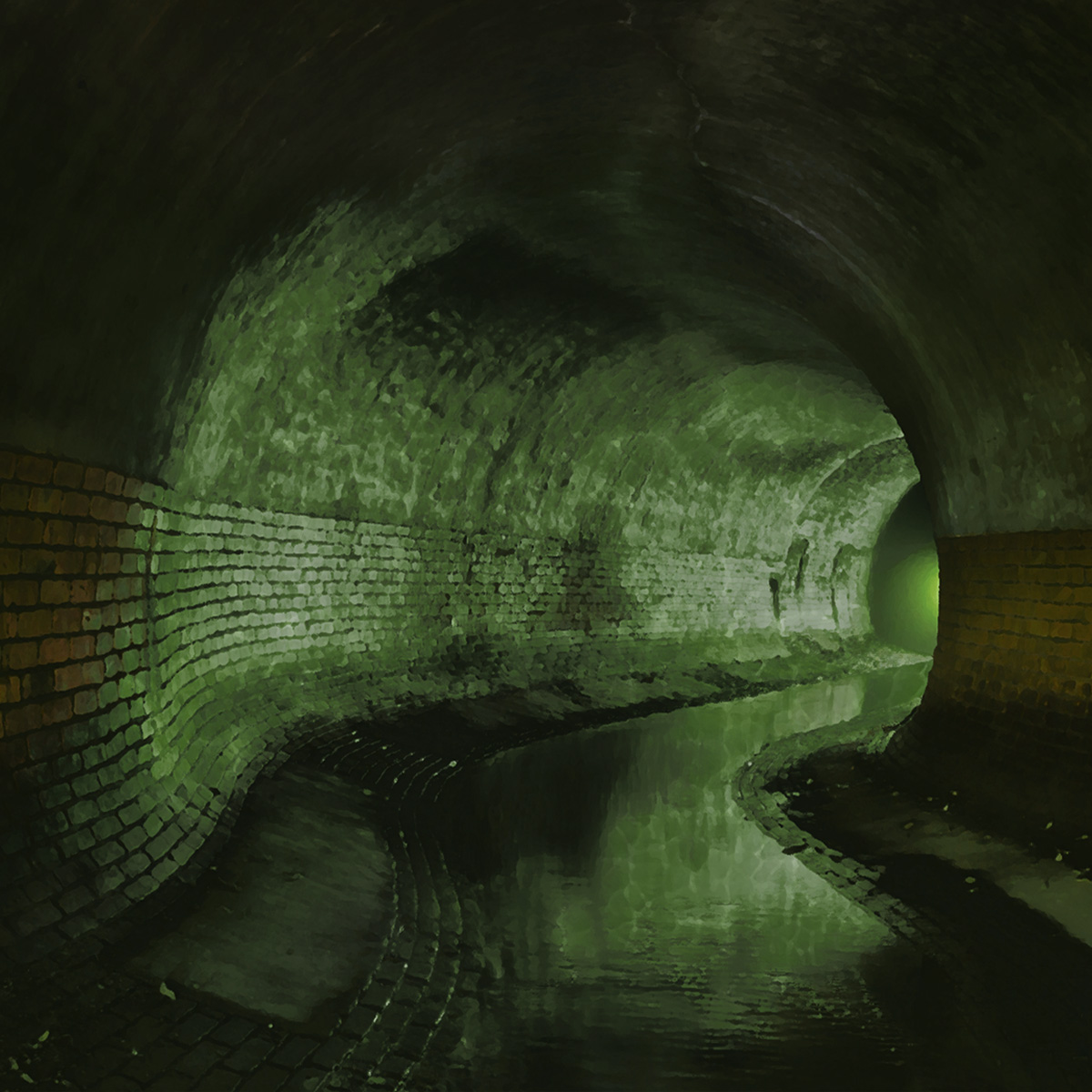
Use Consistency to Speed Up Your Game and Create Dramatic Moments
Training your players is an essential aspect of gaming and one that we (as GMs) often do unconsciously. Now, when I say “training,” I don’t mean teaching them the rules of the game; I am referring to how we teach the players the unwritten rules of our world. Practices like societal norms, the behaviors of its denizens, non-earth physics, and other similar items that you won’t find in the rulebooks need to be learned by your players through experience. For example, if your players find traps on one out of every four doors, they will treat every door as trapped, because that’s what you’ve taught them to do.
These unwritten rules can often slow down a game or cause problems for newer GMs when they are suddenly broken. In this article, we’ll look at how to use real-world rules to speed up your game, how to break your own rules as a plot device, and how to mitigate player confusion when rules are suddenly broken for drama, danger, and tension.
Using Real-World Experience
One of the best tricks we as GMs have in our arsenal is the ability to pull from real-world experiences when setting up our imaginary game worlds. If we had to explain every nuance of the game world, we would need to provide players with entire encyclopedia volumes before anyone could begin to play. Fortunately, we can get away with assuming that most things work as they do here on earth. Gravity just works; the weather, seasons, time, and physics, in general, all behave mostly as they do on Earth. In this way, the only things we need to explain are those things that differ from a player's real-world experience.
Does your world have floating cities? That’s going to need an explanation. While “it’s magic” is acceptable, it does tend to harm both your player’s level of immersion and adjudicating rules around the physics of spell effects. Alternatively, suppose your world has a very rare stone that is lighter than air and only found in a specific area. In that case, this pulls from several real-world experiences of your players and becomes easier to rationalize and remember. While none of our stones are lighter than air, we understand helium and balloons, so we quickly get an idea of the physics around floating cities. Additionally, suggesting the material is rare and only obtained in certain areas sets up the material as a commodity, similar to oil or diamonds. That association hints at conflict, expenses, and other difficulties in acquiring the material. All of this comes from a player’s real-world experience, without any real need for explanation.
We understand how merchants operate because we bring real-world assumptions into our games.
Likewise, we get most of our expectations for social interactions from real-world experience. We all come into a game expecting that we know the basic laws of society and how guards or police work. We understand how merchants operate and what society considers good or bad manners (regardless of whether the players behave that way) because we bring real-world assumptions into our games. When societal norms differ, your players will need to learn how, either through explanation or experience. If it is rude (but not illegal) to bring weapons into a tavern, you could tell your players at the beginning of your game. You’re not punishing your players for knowledge their characters would already know by explaining the expectation. Alternatively, if it’s a new area, the players can discover this fact the first time they enter a bar carrying a weapon. The key here is to let the situation be a teaching lesson; you need to explain to the players why it’s wrong, in addition to being shown (through a beating, calling the guards, etc.). Such interactions train the players to know what to expect.
Consistency is Key
To keep your game moving smoothly, you need to be consistent in your rules. Once you have set up something as a rule (such as floating cities or no weapons in bars), you must consistently use those same rules wherever they apply. Your players become trained to these rules, so when they change, your players want to know why. Another reason it is often better to use real-world rules and expectations for most situations is because it means less for us to remember as GMs. If you make a lot of rules different for your game world, either physically or socially, these are all things you need to track. If all of your trees have feathers instead of leaves, you had better remember that when describing something moving through the woods (there’s unlikely to be any rustling of leaves). Consistency is important.
Breaking the Rules as a Plot Device
There are many times we, as GMs, may want to break the rules—such as to show that something is out of place or create player interest and curiosity. Breaking the rules only works when we understand that it is on purpose and with reason. If your players have been raiding and looting tombs with impunity, they have been trained that their behavior is acceptable. So when the guards come to arrest them after looting one particular tomb, they will be surprised and confused, and they’re going to want to know why this tomb was different. In this case, breaking the rules is used as a plot device and furthers the story.
It’s also necessary to call out the differences in our descriptions so that players have the opportunity to pick up on something out of the norm (not that they always will). If, for example, you wanted to include a peaceful goblin after training your players that all goblins are violent. You need to give your players an indicator of the difference, or you may well find your peaceful goblin slaughtered before they can utter a word. As an example:
“When you enter the chamber, you see a half dozen goblins turn towards you, gnashing their teeth as they drop their food and pick up weapons. One goblin, smaller than the rest, sits alone in the corner with a meager meal, looking up in terror.”
This description lets the players know that one of the goblins is different and gives them a choice regarding the one goblin, even if that goblin reluctantly attacks them. The key is that they know that the rules around goblin behavior have changed; they may not care or want to discover why.
Breaking the Rules for Dramatic Effect
There are times when we may want to break the rules, not as a plot device, but solely for dramatic effect. We do this most commonly with traps and unique, boss-like enemies. However, there is a fine art to breaking the rules in this way. If you do it too often (too many traps), you are training your players that this is the new norm. If there are traps in every dungeon the players have been in, you can be sure that your players will move slowly through every future crypt and dungeon, searching for the trap they know must be there. If all of your adventures end in a boss fight, you can be sure that your players will begin conserving resources through a dungeon and saving them for the inevitable dungeon boss. In order to build drama and tension, this type of breaking of the rules needs to be done sparingly, or it’s just creating a new normal.
There is a fine art to breaking the rules as a plot device or dramatic effect.
If there’s danger involved (like with a trap), it can also be problematic to spring it on your players without notice. Discovering (or overlooking) something that changes the rules they’ve been playing by is better when it happens via the players’ agency rather than GM agency. While traps are, by their very nature, a surprise and a breaking of the rule that walking is primarily safe, traps are usually viewed as punishing characters. A thief may have a chance to detect a trap, but if there’s no indication that there might be one, why should they even look? If the players have only encountered boss fights as solo encounters, throwing an unexpected boss onto the end of a group battle will likely wipe out your players.
It can be helpful to give hints to your players when you want them to expect that you are breaking the rules they’ve come to expect. Since you’ve trained them to expect certain things, it is your responsibility to indicate that things have changed. These hints can be subtle, but they enable your players a chance to pick up on differences and act accordingly.
It is your responsibility to indicate that expectations have changed.
As they move down a long corridor, you might let the players know that they see scorch marks or dried blood on the walls. Such details may indicate a trap, but they may also be from an old battle or something completely different. If the players find and avoid the trap, they feel it is through their own agency. If they spring it and suffer the effects, it’s because they failed to act on information. On the other hand, if they get no indication and a fireball explodes in their midst, it can feel like the GM is punishing the players without reasonable expectation. These hints and details should be unique or used more often than there are traps so that they don’t become a “trap label.”
If the party enters a room where a bunch of orcs are chanting in a ceremony around a portal, it may be an indicator that a boss-like enemy could appear at any time. The fight is likely to be more challenging as players try to conserve resources for that final fight, whether it comes or not. Such instances may occasionally be used as a diversion or red-herring if used sparingly. In any case, the players will believe they had agency in the event, either by preventing the boss-fight (even if there never was one) or by deducing that it would happen and preparing for it. If there was no such indicator and a random portal opened at the end of a fight, spilling out a giant demon, it may again feel like the GM is punishing the players without reason.
Consistency is one of the most important factors in running a game.
Conclusion
Your players learn how your game world works through you, which becomes knowledge their characters have. Being consistent with this information is essential in training your players to your game world. It also makes it more powerful when we break our own rules to single something out. It’s common to think that if we let the players know a surprise is coming that it ruins the surprise. However, in a game where the rules are primarily in the GM’s head and imagination, it can be helpful to give hints to your players when you want them to expect that you are breaking rules they’ve come to expect.
Since you’ve trained them to expect certain things, it is your responsibility to indicate that things have changed. These hints can be subtle, but they enable your players a chance to deduce a difference and act accordingly. In the end, it’s all about player agency and immersion by letting your players feel as though their characters belong in the world and understand how it works.
Want to continue the conversation? Join Our Discord



Commenting has been disabled for this post.